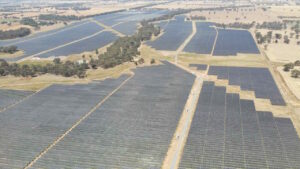The federal Coalition government has made another dramatic intervention into Australia’s electricity markets, this time announcing it will pay Victoria’s Portland aluminium smelter in Victoria nearly $80 million to act like a “giant battery” in the important Reliability and Emergency Reserve Trader (RERT) scheme.
The intervention from Taylor’s office appears to have caught the market, and possibly the Australian Energy Market Operator, by surprise. It will mean that Portland will be the only provider of RERT services to be paid just to be on standby to deliver emergency power reserves.
The extraordinary federal intervention, described by energy minister Angus Taylor on Monday as a move to secure Victoria’s energy system, will provide the Alcoa-owned smelter with guaranteed RERT revenue of up to $76.8 million over four years to 2024-25, subject to negotiation.
“The underwriting is temporary and will cease once post-2025 electricity market reforms are in place that better value the essential system services provided by large industrial loads,” a statement said.
“In return for government underwriting, Portland will be required to participate in the RERT to the maximum extent possible.”
The move is extraordinary for a number of reasons, but chiefly because AEMO’s RERT mechanism already pays parties like Alcoa to reduce demand at key times if the supply equation becomes tight. But only if they participate.
That is to say that while AEMO will seek more than 1600MW of RERT this year, in case of a dramatic network or generator failure, it will not cost anything unless deployed.
Or, as AEMO’s outgoing chief Audrey Zibelman put it to RenewEconomy in August, when the market operator released its annual Electricity Statement of Opportunities (or “blackout” report): “We only pay for them if we actually use them.”
And according to AEMO’s ESOO, it is highly unlikely the Portland smelter’s grid balancing services will be called upon this summer, thanks to the addition of more than 4GW of new wind and solar capacity around the country.
Market participants raised several concerns about the intervention. One was that it was likely to distort the pricing and possibility the availability of RERT services, and may encourage others – such as the Tomago smelter in NSW to seek similar payments.
Others said that while the idea of using smelters as “big batteries” for the grid has been widely suggested – the Victorian Greens, for instance, in July presented a green Covid-19 recovery package which included a funding an upgrade to Portland to allow it to act as a “reverse battery” while being powered by wind and solar – to do so effectively would require investment in new technologies and upgrades that would facilitate that. It is not clear that this is the case.
Others suggested that the manner of this intervention means the federal Coalition is essentially propping up a major coal-power consumer.
“The Portland aluminium smelter provides unique and valuable energy services and emergency reserves to the grid, particularly over summer,” Taylor said in joint statement with the federal member for Wannon, Dan Tehan.
“It is three times larger than the largest battery in Australia and has been vital to avoiding black outs in previous summers,” Taylor said.
“The government will ensure Portland continues to play that important role and is appropriately compensated for the grid services it provides.”
As ITK analyst and regular RenewEconomy columnist David Leitch noted back in 2017, the Portland aluminium smelter has been on borrowed time for years now, its survival largely thanks to a roughly $1.1 billion subsidy from the Victorian Labor government back in 2017 and a $40 million interest free loan from the federal Coalition.
“It wasn’t making any money [in 2016] when electricity prices were low, so … we see this as a very poor outcome,” Leitch wrote regarding the Victoria government bail-out. “It’s also obviously unfair to every other industry.”
And this is true of the federal government’s action today. By paying the Portland smelter just to participate in the RERT, the energy minister is sending the message to all RERT participants that the government’s cheque book is open.
Taylor’s justification for the intervention referred to the lack of new dispatchable generation. Yet his pet scheme, the Underwriting New Investment Scheme, has failed to produce any new investments – apart from a small grant to Trevor St Baker’s highly profitable Vales Point coal plant – despite the promise of government funding. UNGI has been accused by the industry of standing in the way of new investment.
But it seems the federal government is the most worried about the survival of Victoria’s coal power plants, which are inextricably linked to the existence of the smelter.
“If Portland were to close it would risk the reliability and security of the grid, and may lead to the early closure of one of the coal-fired generators the state relies on for much of its power,” said Minister Tehan in the Monday statement.
“If another coal-fired generator closes early, it would mean higher electricity prices for all Victorian consumers as it did when the Hazelwood power plant closed in 2017, which saw prices skyrocket by up to 85 per cent,” he added, for good measure. He does not note that the addition of renewables has since driven prices right back down.
Interestingly, the move by the federal government comes on the same day as results from the latest Clean Energy Council renewables investment confidence survey, which named federal government market intervention as one of the key turn-offs for prospective large-scale wind and solar developers.










